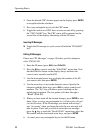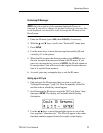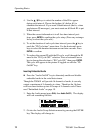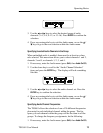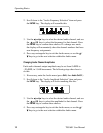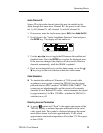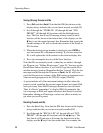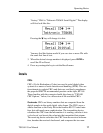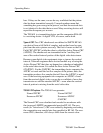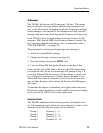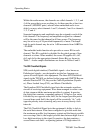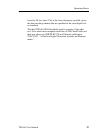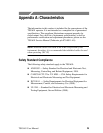
Operating Basics
18
TSG 601 User Manual
bers. If they are the same, we can be very confident that the picture
data has been transmitted correctly. Unequal numbers mean that
something has gone wrong in the process, and that the received data
is not identical to the data that was sent. Many receiving devices will
report the discrepancy as an error.
The TSG 601 is a transmitting device, and the companion SDA 601
is a receiving device. A digital VTR, of course, can be both.
Types of CRC. Two CRC checkwords are defined in SMPTE RP 165:
one derived from a full field of samples, and another based on sam-
ples from the active picture area only. The first is known as the Full
Field CRC (FFCRC) while the other is called the Active Picture CRC
(APCRC). The checkwords are transmitted in the “ancillary data”
area of the vertical interval portion of the digital video data stream.
Because some digital video equipment strips or ignores the vertical
interval, Tektronix engineers have devised another way of using the
Active Picture CRC that does not depend on a checkword embedded
in the serial data stream. It is called the Zero Active Picture CRC
(∅APCRC). For the ∅APCRC, the transmitting device computes the
APCRC as usual until the last five samples of the picture; then, the
transmitter produces five samples that will force the APCRC to equal
zero. If the receiving equipment also computes an APCRC of zero
from the received digital video, we can be as confident of error-free
transmission as with the standard APCRC—even when the vertical
interval portion is missing from the serial video data.
TSG 601 CRC options. The TSG 601 can generate:
Normal FFCRC Normal APCRC
Erroneous FFCRC Erroneous APCRC
∅APCRC
The Normal CRCs are calculated and encoded in accordance with
the (proposed) SMPTE recommended practice RP 165. The erro-
neous (or “forced error”) CRCs are created by beginning and ending
the computation one sample later than specified in RP 165. The erro-
neous CRCs, therefore, will always differ from the correct value.



